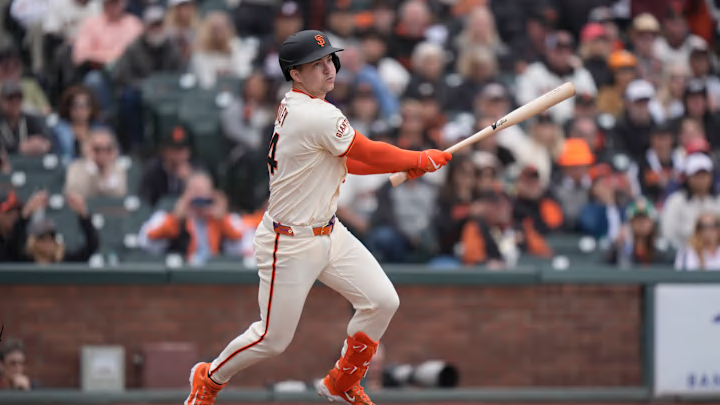SF Giants catcher Patrick Bailey entered Sunday with a .171/.224/.257 (36 wRC+) line in 76 plate appearances this season. More than anything else, the number that stands out is the huge spike in his strikeout rate.
The most concerning part of SF Giants catcher Patrick Bailey's slow start at the plate
In today's game, teams will often make the tradeoff in favor of defense if the catcher is a below-average hitter. Where does that tradeoff stop making sense? That is a tough question to answer, especially in the case of Bailey.
On one hand, the Giants have one of the best defensive players at a premium position in the young backstop. On the other hand, the switch-hitting has put up just a .491 OPS in 302 plate appearances since July 1 of last season.
Bailey got off to a nice start at the plate in 2024, but his numbers tailed off sharply in the second half. It is fair to wonder whether his performance over the past four baseball months is just a prolonged slump or part of a larger and more concerning trend?
Bailey's strikeout rate has spiked to 35.5 percent in 2025, but not all strikeout rates are created equally. If he was chasing too much out of the zone, that is something he can correct. That is a swing decision issue. However, his chase rate is just fine at 26.5 percent according to Baseball Savant.
The 25-year-old catcher is swinging and missing way too often at pitches in the strike zone. His zone contact rate sits at 70.7 percent, down from 84.0 percent last year. The league-average zone contact rate usually sits around 85 percent, so Bailey's mark is well below that.
What seems to be the cause of this? He has generally had quality contact skills, even if his strikeout rate generally hovers comfortably above 20 percent. It was never a concern like it is right now.
The number that stands out is his 20.0-degree average launch angle. This number is nearly double what it was last season at 12.1 degrees. The change is likely due to working with the hitting coaches to get the ball in the air with more regularity.
There has certainly been success in that area, as he is getting the ball in the air in 70.5 percent of batted ball events. There has been a tradeoff here, too. Bailey's line drive rate is nearly half of what it was last season (30.7 percent) at 15.9 percent in 2025. So, while he is getting the ball in the air more often, it has not necessarily been good contact.
Plus, it seems to be making his swing more vulnerable to pitches in the strike zone. Flatter swings tend to result in more contact, whereas uppercuts tend to create bat path holes, but with the hopes that it leads to more power. That has not been the case with Bailey.
It feels like when Bailey is at his best, he is spraying line drives all over the field. That has not been the case this season, and has led to poor production at the plate and a trend that the Giants might nervously be monitoring.
